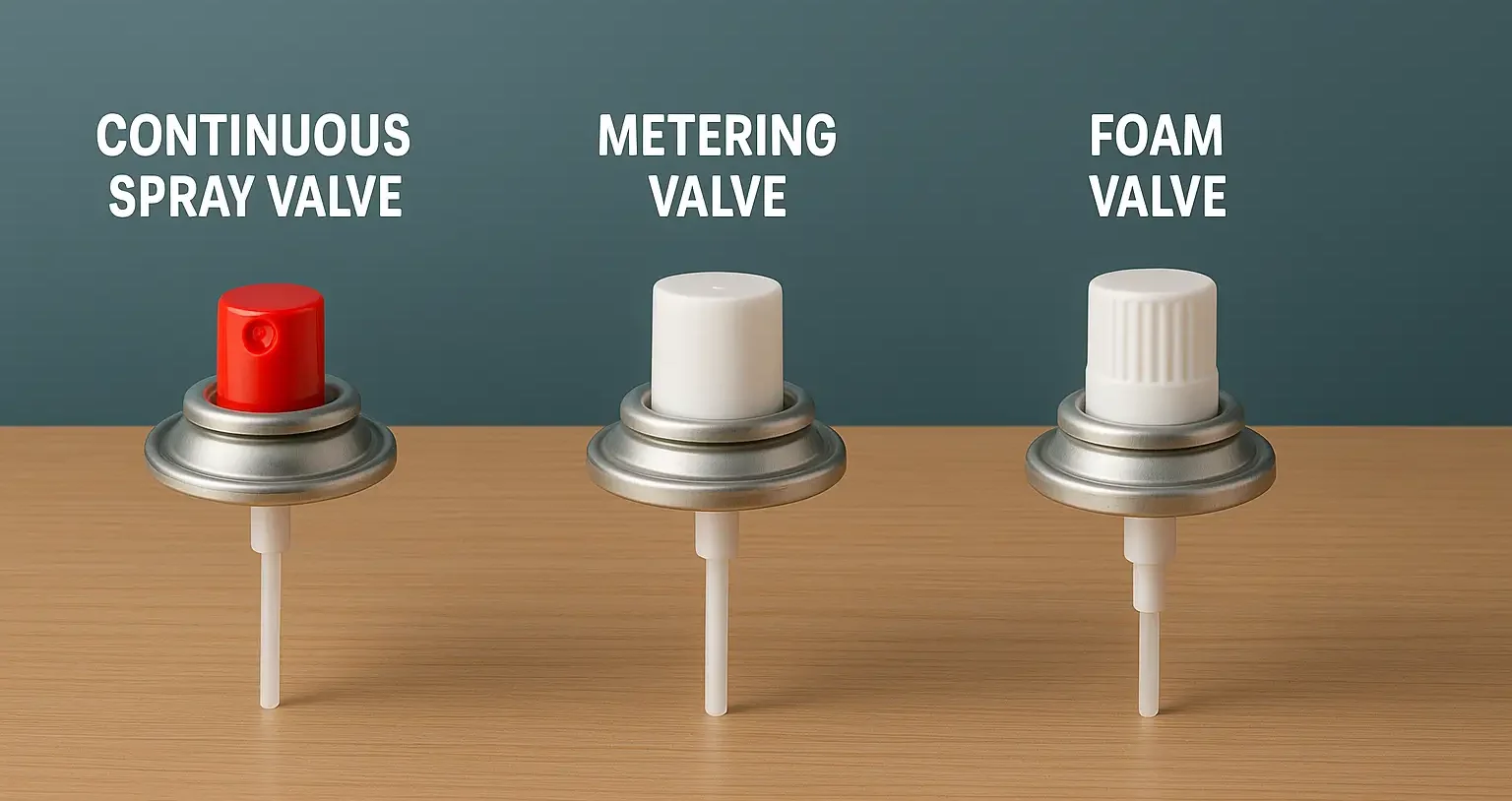- The valves regulate the release of the formulation and ensures accurate dosing.
Components of a Valve System:
- Valve Cup: Secures the valve to the container.
- Gasket: Prevents leakage and ensures a tight seal.
- Actuator: The part pressed by the user to release the product.
- Stem: Serves as the channel for the product to travel during actuation.
- Spring: Returns the valve to the closed position after use.
- Valve Body: Encases the valve mechanism.
- Dip Tube: Extends into the container, drawing the formulation into the valve for dispensing.
Advertisements
Types of Valves:

-
Continuous Spray Valves
- Allows product to flow as long as the actuator is pressed.
- Common for topical sprays like hair sprays, disinfectants.
-
Metering Valves
- Delivers a specific quantity of product per actuation.
- Critical for inhalation aerosols where dose accuracy is paramount.
-
Foam Valve
- Designed to create and expel foam. Usually paired with specific formulations that contain surfactants.
Advertisements
Desired Valve Properties:
- Good sealing to prevent leaks.
- Chemical compatibility with formulation and propellant.
- Consistent dose accuracy and spray characteristics over product shelf life.
Click Here to Watch the Best Pharma Videos
Advertisements

